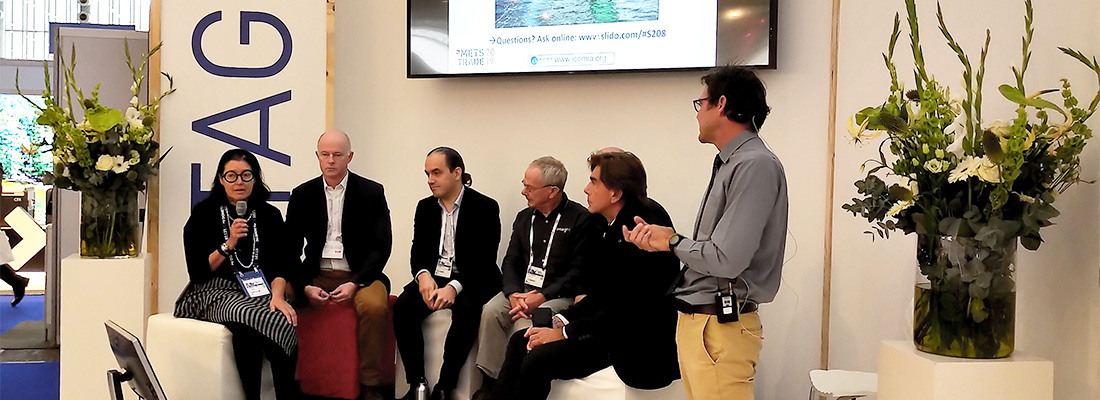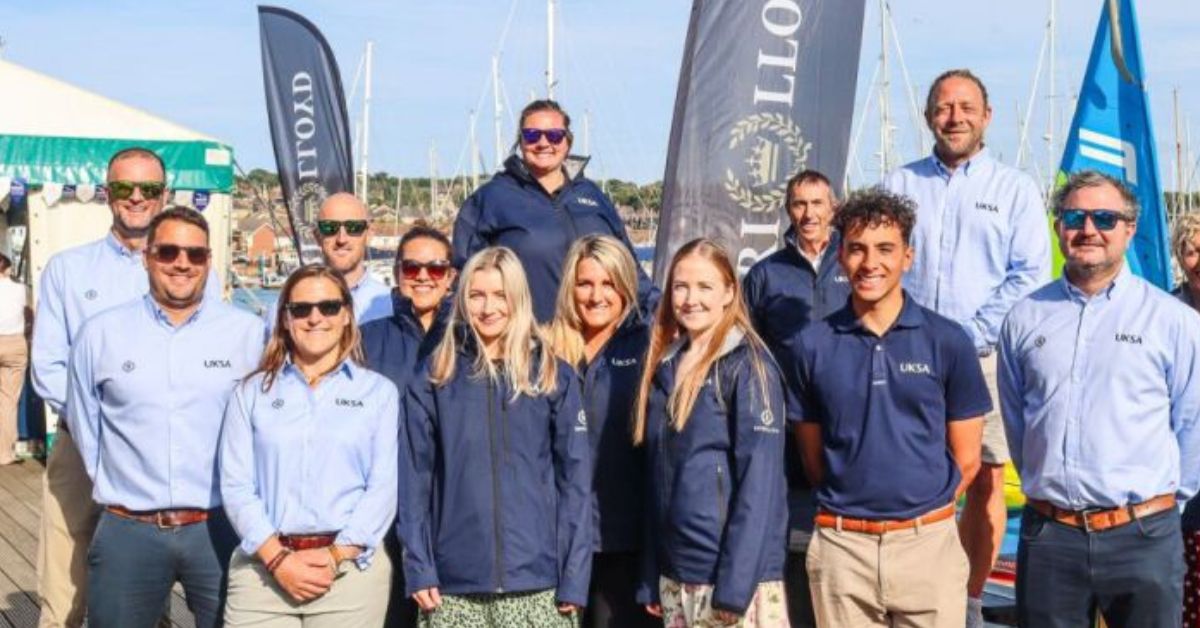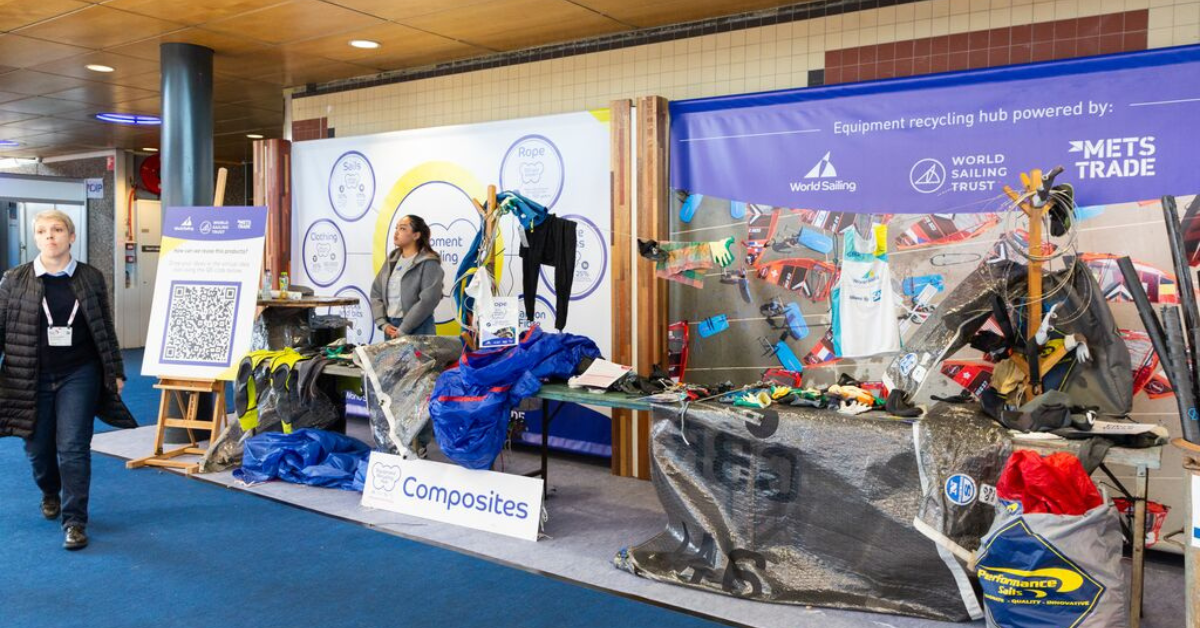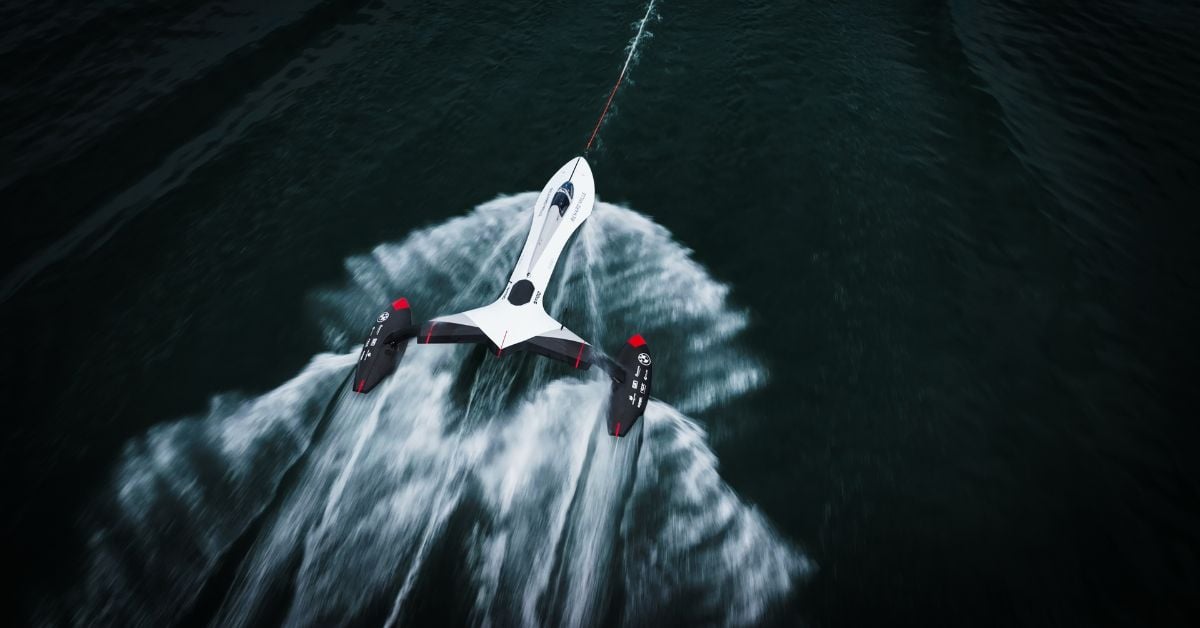
This time our panel of experts explored how the quest for more sustainable boating has progressed in the last 12 months. Topics included disassembly, life cycle assessment, material selection for better recyclability at end-of-life, and the development of clean energy storage and propulsion solutions.
The question asked at METSTRADE last year was, ‘how green is green in the leisure marine industry?’ After an interesting debate with lots of audience interaction, it was considered well worthy of a follow up at this year’s show. This time our panel of experts explored how the quest for more sustainable boating has progressed in the last 12 months, and the session was moderated again by Patrick Hemp, Technical Manager for ICOMIA. Topics included disassembly, life cycle assessment, material selection for better recyclability at end-of-life, and the development of clean energy storage and propulsion solutions.
Boatbuilders switching to sustainable materials
On the panel were three boatbuilders from varied sectors of the industry; UK based Sunseeker, Italy’s Amer Yachts, and Vaan Yachts from the Netherlands. Barbara Amerio speaking for Amer Yachts, gave details of how her yard will be the first superyacht builder to adopt a fully recyclable composite called FILAVA. Based on a fibre derived from volcanic rock combined with a bio-epoxy resin, the matrix can be reconstituted at end-of-life, by separating the fibre from the resin, thus enabling the materials to be reused in boat construction.
Igor Kluin from Vaan Yachts explained that his model R4 sailing catamaran will be constructed entirely from sustainable materials. For example, more than 50% of the hull is constructed from recycled aluminium such as old window panes, traffic signs, and number plates. Besides using recycled aluminium for the hull, Igor and his team have researched and selected sustainable materials for other parts of the boat, such as a ‘teak-look’ FSC certified cork for the decking, and a combination of recycled and bio fabrics for the interiors. It was agreed amongst the panelists, that construction materials of the future must have an inherent end-of-life commercial value, rather than becoming a non-usable waste stream liability.
James Starkey of Norco Composites explained how calculation tools are now available which enable a precise Life Cycle Analysis, leading to significant waste reductions, lower carbon footprint and more sustainable material selection in boat building. He said, “when we deplete resources in order to make something and don’t have a way to replace them, we are not selling full value to the buyer of the product. Nowadays the engineering / scientific evidence points towards more sustainable materials becoming available, and this has to be the future focus.”
Florestan Fillon spoke for the Monaco based Sustainable Yachting Network, who are constantly gathering and disseminating information on sustainable practises across the boating industry. He referred to the Water Revolution Foundation’s ‘Yachting Assessment Tool’; a computational analysis system, designed to accurately measure and report on the environmental impact of the superyacht construction process. The tool assesses the environmental footprint of the materials used, and the impact of the activities that accompany the design and build operations. The fully operational system, and its associated training program were being officially launched during METSTRADE 2019.
Energy savings, a major factor in future yacht design
Speaking of developments during the past year, Ken Wittamore from marine energy specialists Triskel Marine said that the move towards multihulls was becoming a more popular choice. This type of boat offers increased living space per dollar spent, and attracts more new owners to the water, but also increases the energy consumption. More domestic type appliances are demanded onboard, with the owner and his family looking for all the comforts of home, without compromising on energy usage. Ken mentioned that the falling price of energy storage solutions was enabling creative solutions for dealing with these increasing demands, by capturing power from various onboard sources for later use; such as solar, wind, diesel generator, and even storing excess energy from the main engine.
As far as the future is concerned, Ken described how the calculation metrics are in place to enable an energy efficiency rating that can be applied to a specific boat. With multiple sources of energy being stored and utilised onboard, it is possible to calculate the boat’s total energy usage in kw/hrs and compare that with its diesel consumption. This results in a measurement of fossil fuel usage per kw/hr which can be used to rate one boat against another for an eco-conscious client to consider.
Andrea Frabetti CEO of Sunseeker, stated that in his experience, owners don’t usually ask about sustainability or fuel savings. He argued that the way to sell them more eco-friendly energy solutions, is to focus on the comfort and improved lifestyle aspects that onboard systems with green credentials can offer them. He said that the advantage of laying quietly at anchor with clean swimming water, and no noisy generators or smelly exhaust smoke is the most appealing aspect. Andrea announced that his partnership with MTU was ready to produce a Sunseeker superyacht incorporating full parallel hybrid propulsion technology. This concept combined with an optimised efficiency hull design, is expected to offer fuel savings of 25% at speeds of 10 to 12 knots, compared to a conventional diesel propulsion package.
In a similar way, Barbara Amerio described how her company had reduced the weight of their Amer 94 (28m) superyacht by 20 tons, and working closely with Volvo Penta and its IPS propulsion system, had managed to achieve an impressive diesel fuel consumption of 3 litres per mile at 9 knots. A discussion around the prospects for hydrogen powered propulsion on boats of the future led to some differing opinions amongst the panelists; the overall consensus being, that the concept is likely to become a realistic commercial proposition within 3 to 5 years, based on the current pace and progress of research and development work.
So, plenty to discuss at next year’s METSTRADE, and if the past 12 months are any indication, we might be surprised at the number of new sustainable technologies becoming adopted in our industry.
Note: The entire one hour panel discussion, with a lot more detailed information from the speakers was video recorded, and can be viewed here:



